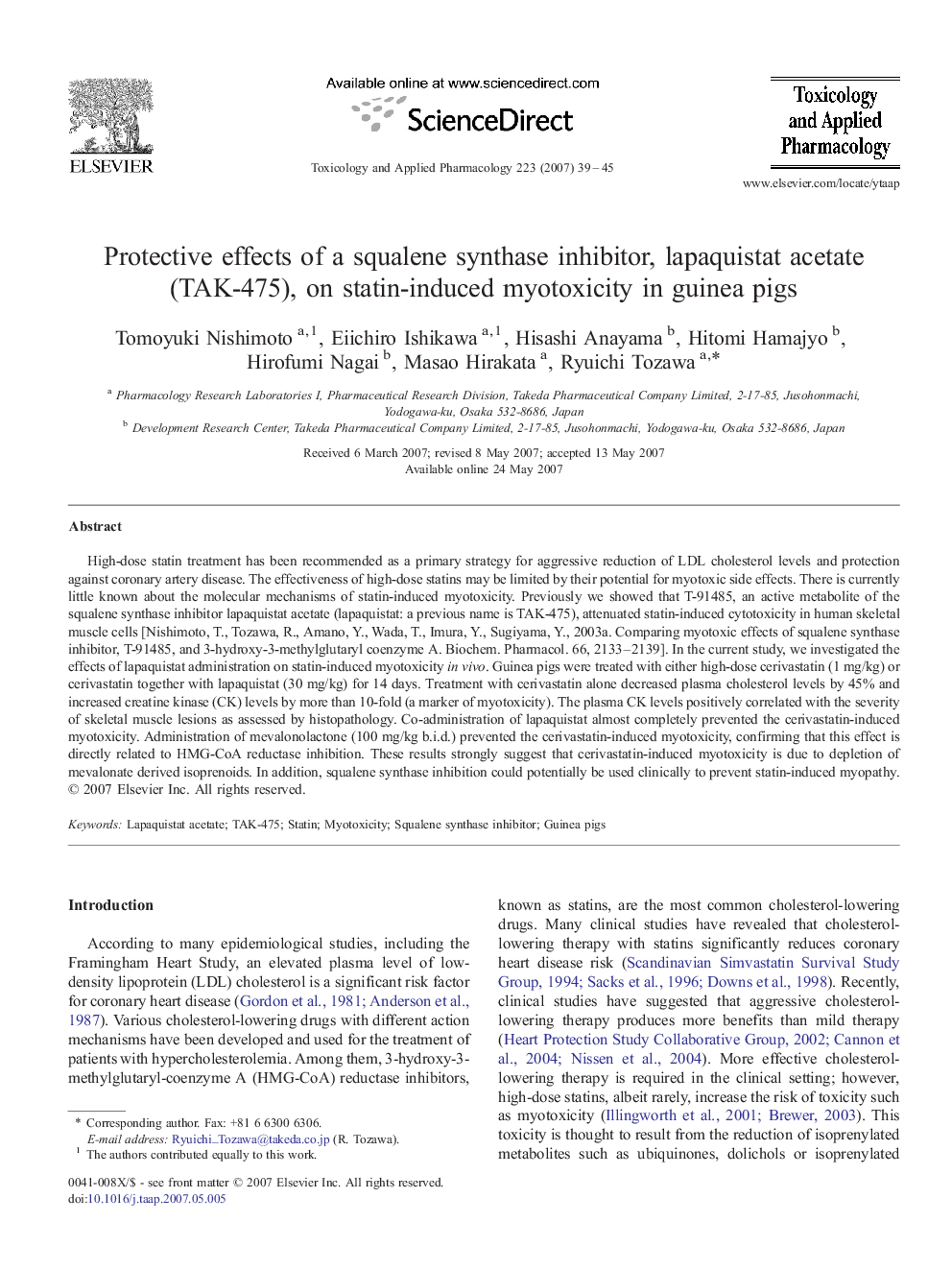| کد مقاله | کد نشریه | سال انتشار | مقاله انگلیسی | نسخه تمام متن |
|---|---|---|---|---|
| 2571009 | 1128612 | 2007 | 7 صفحه PDF | دانلود رایگان |

High-dose statin treatment has been recommended as a primary strategy for aggressive reduction of LDL cholesterol levels and protection against coronary artery disease. The effectiveness of high-dose statins may be limited by their potential for myotoxic side effects. There is currently little known about the molecular mechanisms of statin-induced myotoxicity. Previously we showed that T-91485, an active metabolite of the squalene synthase inhibitor lapaquistat acetate (lapaquistat: a previous name is TAK-475), attenuated statin-induced cytotoxicity in human skeletal muscle cells [Nishimoto, T., Tozawa, R., Amano, Y., Wada, T., Imura, Y., Sugiyama, Y., 2003a. Comparing myotoxic effects of squalene synthase inhibitor, T-91485, and 3-hydroxy-3-methylglutaryl coenzyme A. Biochem. Pharmacol. 66, 2133–2139]. In the current study, we investigated the effects of lapaquistat administration on statin-induced myotoxicity in vivo. Guinea pigs were treated with either high-dose cerivastatin (1 mg/kg) or cerivastatin together with lapaquistat (30 mg/kg) for 14 days. Treatment with cerivastatin alone decreased plasma cholesterol levels by 45% and increased creatine kinase (CK) levels by more than 10-fold (a marker of myotoxicity). The plasma CK levels positively correlated with the severity of skeletal muscle lesions as assessed by histopathology. Co-administration of lapaquistat almost completely prevented the cerivastatin-induced myotoxicity. Administration of mevalonolactone (100 mg/kg b.i.d.) prevented the cerivastatin-induced myotoxicity, confirming that this effect is directly related to HMG-CoA reductase inhibition. These results strongly suggest that cerivastatin-induced myotoxicity is due to depletion of mevalonate derived isoprenoids. In addition, squalene synthase inhibition could potentially be used clinically to prevent statin-induced myopathy.
Journal: Toxicology and Applied Pharmacology - Volume 223, Issue 1, 15 August 2007, Pages 39–45